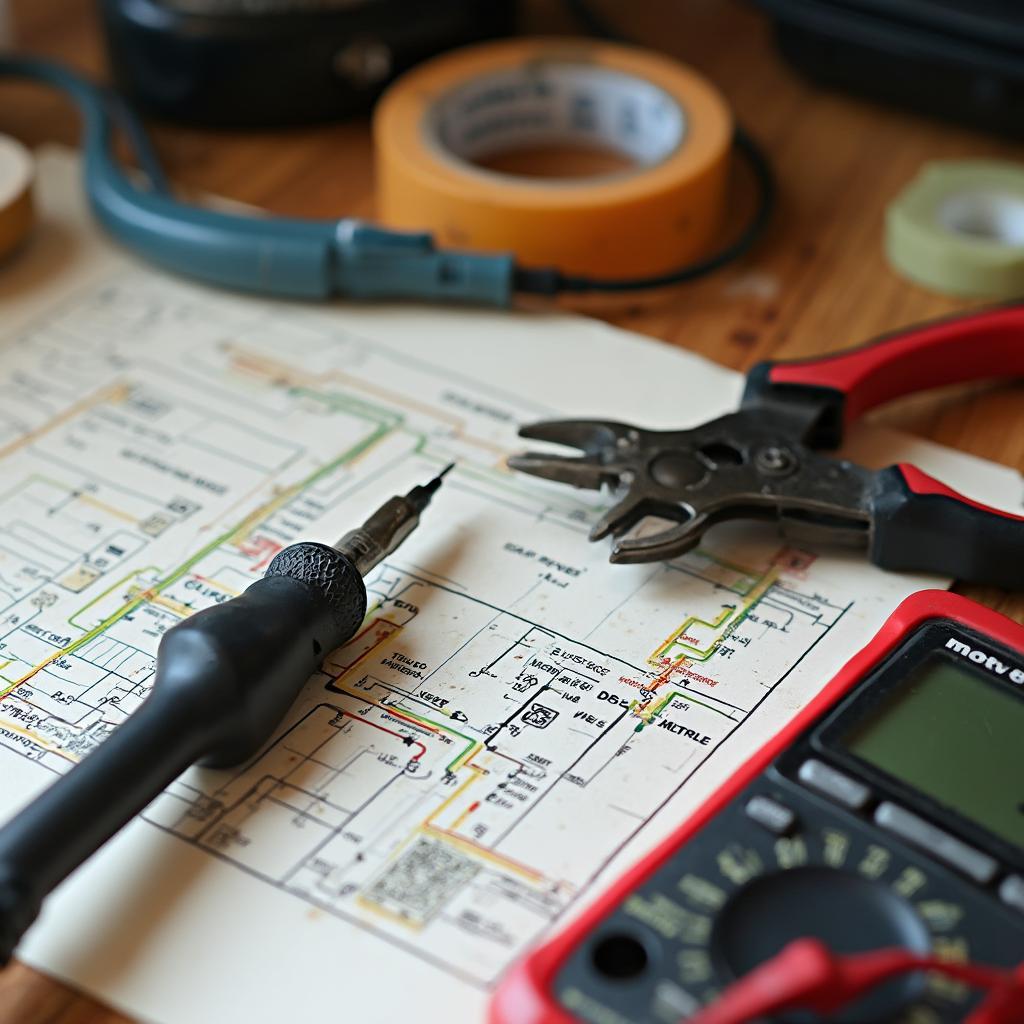Converting an OBD2 harness to OBD1 in a Honda can seem daunting, but with the right knowledge and approach, it’s a manageable task. This guide provides a detailed walkthrough of the conversion process, common challenges, and essential tips for a successful outcome.
Switching from OBD2 to OBD1 in your Honda often involves modifications to the wiring harness, ECU, and sometimes even sensors. This conversion is popular among Honda enthusiasts, especially those working with older engine swaps or preferring the simplicity of the OBD1 system. Here, you’ll find everything you need to know to tackle this project with confidence. After reading this guide, converting your OBD2 harness to OBD1 will be a much less intimidating process.
Understanding the OBD2 to OBD1 Honda Conversion
Why would someone want to convert from OBD2 to OBD1? Several reasons motivate this conversion, including simplified tuning, compatibility with older engine swaps, and sometimes even cost savings. OBD1 systems are often perceived as easier to diagnose and troubleshoot, appealing to those who prefer a more hands-on approach to their vehicle’s electronics. This conversion can open up possibilities for using different ECUs and tuning options not available with the OBD2 system. Check out our guide on 95 eg convert to obd2 for more insights.
Gathering the Necessary Tools and Parts
Before starting the conversion, gather the required tools and parts. This includes an OBD1 ECU compatible with your Honda engine, an OBD1 engine harness, various connectors, soldering iron, heat shrink tubing, electrical tape, and a wiring diagram specific to your Honda model. Having the right tools at hand will make the process smoother and more efficient. Don’t forget to consult a wiring diagram to ensure accurate connections.
Step-by-Step Conversion Process
- Disconnect the battery: This is crucial for safety before working on any electrical components.
- Remove the OBD2 ECU and harness: Carefully disconnect all connectors and remove the ECU and harness from the vehicle.
- Identify corresponding wires: Using the wiring diagrams for both OBD1 and OBD2 systems, identify the corresponding wires for each function.
- Modify the harness: This is the core of the conversion. Splice, solder, and heat shrink the necessary wires to match the OBD1 pinout. Precision is key here to prevent future electrical issues.
- Install the OBD1 ECU and harness: Once the harness is modified, install the OBD1 ECU and harness in the vehicle.
- Connect the battery and test: Reconnect the battery and thoroughly test all functions to ensure the conversion is successful.
Common Challenges and Troubleshooting
One common challenge is dealing with incompatible sensors. Some OBD2 sensors might not work with the OBD1 system, requiring replacements or adapters. Another issue can be mismatched wiring, which can lead to malfunctions or even damage to the ECU. You can also check the guide on obd2 to obd1 alternator to better understand the wiring aspect.
Tips for a Successful Conversion
- Double-check wiring: Meticulously verify all connections before powering on the system. A single misplaced wire can cause significant problems. More information on conversions can be found at 1994 honda civic ex obd1 to obd2 conversion.
- Use high-quality components: Investing in quality parts ensures reliability and longevity.
- Consult online forums: Online communities can provide valuable insights and solutions to specific problems.
- Seek professional help if needed: Don’t hesitate to consult a qualified mechanic if you encounter difficulties.
Expert Insight: John Davis, a seasoned automotive electrician, emphasizes, “Accuracy is paramount in this conversion. A meticulous approach to wiring is essential for a successful outcome.”
Conclusion
Converting an OBD2 harness to OBD1 in a Honda requires careful planning, precise execution, and thorough testing. This guide has provided a comprehensive overview of the process, common challenges, and essential tips for a successful conversion. By following these guidelines, you can confidently tackle this project and enjoy the benefits of the OBD1 system in your Honda. This conversion can offer several advantages, but careful planning and execution are crucial. For further information on OBD conversions, check out our guide on honda obd1 to obd2 conversion bar. Remember to always double-check your work.
FAQ
- Is converting from OBD2 to OBD1 legal? Legality depends on local regulations regarding emissions. Consult your local authorities for specific guidelines.
- What are the advantages of OBD1 over OBD2? OBD1 is often simpler to tune and diagnose, and can be more cost-effective for certain modifications.
- Do I need to change the engine sensors? Some OBD2 sensors might not be compatible with OBD1, requiring replacement or adapters.
- What is the most common problem encountered during the conversion? Wiring errors are the most frequent issue, often due to misinterpreting the wiring diagrams.
- Can I reverse the conversion back to OBD2? Yes, the conversion is generally reversible by reinstalling the original OBD2 components.
- Where can I find reliable wiring diagrams? Wiring diagrams can be found in service manuals or online resources specific to your Honda model.
- What should I do if I encounter problems during the conversion? Consult online forums or seek professional help from a qualified mechanic.
For any further assistance, please contact us via WhatsApp: +1(641)206-8880, or Email: [email protected]. Our customer support team is available 24/7.

